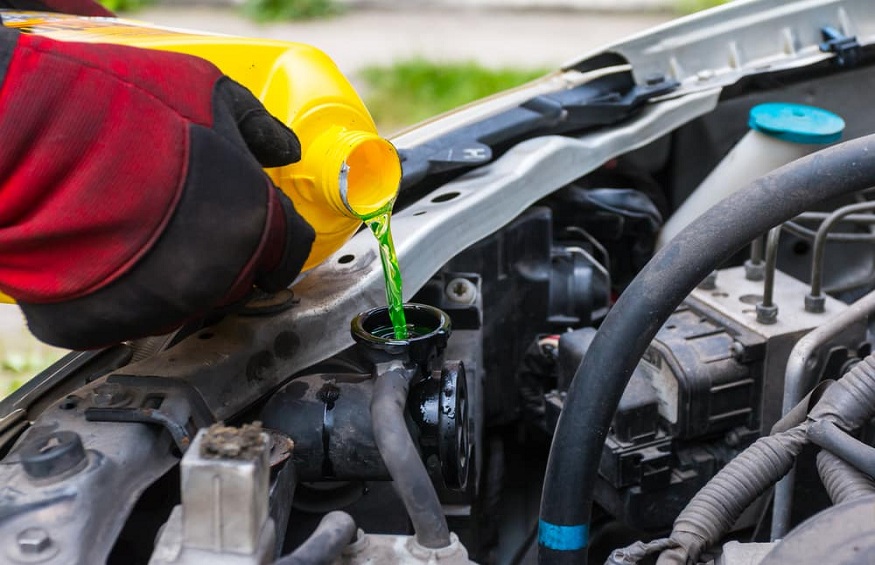What Is a Radiator in a Car?

A car radiator is a device that helps keep your vehicle cool. This system works by circulating water through the engine. If you want to learn more about how this process works, check out the article below.
It’s important to keep your car cool because if your engine overheats, then your gas mileage will drop and eventually cause serious damage. This is why you need a reliable radiator system in order to prevent your car from breaking down over time due to an overheated engine.
How Does a Radiator Work?
A radiator, also called the heater core, plays a vital role in keeping your car’s engine running properly by cooling it down so that oil doesn’t heat up too much and break down.
In order to circulate water through the engine, you need to have a radiator. A radiator consists of pipes, tubes, hoses, and other parts. The purpose of these components is to transfer heat from the engine into the air. As the temperature rises, so does the pressure inside the radiator. Water flows through the pipes and tubes, and then passes back into the engine.
If you want to know more about how a radiator works, read on. You’ll find all of the details right here!
Components of a Radiator
A car radiator is made up of different parts. Here are the components that make up a typical radiator.
Water Tank
This part holds water, which cools down your engine.
Coolant Pipes
These pipes carry the liquid to other parts in order to keep the system running smoothly.
Radiant Heat Exchanger (RHE)
The RHE transfers heat from one fluid to another. This process helps to maintain a steady temperature.
Warm Water Pipe
It carries warm water to the heater core. The core uses this hot water to create steam, which then heats up the air inside the cabin.
Condensers
They help to remove moisture and dirt particles from the air.
Hoses
There are two hoses in a vehicle. One goes to the fan motor, while the other connects the cooling system with the radiator.
Fan Motor
The fan motor runs the fans. It also drives the blower, which moves the air through the radiator.
Radiator Failure
If you’re looking to get your car repaired, you should be aware that a lot of mechanics don’t have the necessary skills to fix your vehicle. This is why you need to know how to diagnose a broken radiator yourself.
In order to figure out whether you need to replace the radiator, you’ll first want to check the fluid level in the engine. If it’s low, you might need to add more oil. You can also look at the coolant. When the water in the system gets hot, the pressure inside the tank will increase. Once the temperature reaches 140 degrees Fahrenheit, you’ll start seeing bubbles coming from the top of the radiator.
You can use this information to determine if you need to change the radiator. However, it is important to note that a cracked or leaking radiator is a serious problem that could lead to severe damage.
If your car overheats, you should always turn off your ignition before getting out of your vehicle. The reason for this is that the cooling fan will stop working when the engine stops running.
Preventative Maintenance
Your car needs regular checkups to keep running smoothly. This is true of any vehicle, but it’s especially important when you’re driving an older model.
Here are a few things you can do to ensure that your radiator stays cool:
Have regular service checks on your car’s engine. A mechanic may be able to find problems with your radiator before there is major damage.
Get the right size radiator for your vehicle. This ensures that you don’t have to worry about finding space inside your car to fit it in.
You should make sure that your car’s engine oil levels are correct. If you don’t have enough lubricant in the motor, then the engine will be starved for fuel. As a result, it won’t run efficiently, and you’ll end up spending more money on gas.
If you drive through water, you need to change your wiper blades regularly. The rubber components of these parts can crack, and this will cause them to break off. Then you’ll have to replace the entire blade assembly.
It’s also a good idea to get your tires rotated every six months. You want to avoid flat tires, because they can cost you a lot of money.
While you’re at the dealership, ask the service department if there are any other services that you might need. For example, you may want to schedule an inspection or tune-up. These preventative maintenance measures will help you save time, money, and frustration.
Conclusion
In conclusion, a broken car radiator can be fixed by yourself without any help. However, if you don’t have the right tools, you may end up damaging the parts of the engine instead of repairing them. So, before you start working on your vehicle, you should make sure to get all of the necessary equipment.
One thing that you might not realize is that you can actually buy a replacement part online. There are websites (SuncentAuto : auto parts store) where you can find the exact same part that you need.
You can also save money by buying a new radiator. In this case, you’ll just need to replace the old one with the new one.
As you can tell from reading this article, fixing a car radiator is fairly easy. You simply follow the instructions, and then you’re done!






